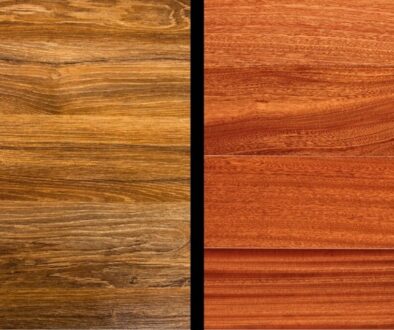What Is Mango Wood? Pros and Cons

Published March 19, 2025
Searching for furniture that blends style, affordability, and sustainability? Mango wood could be just what you need. Celebrated for its natural charm and eco-friendly origins, it’s gaining popularity across the globe. But how durable and versatile is it?
In this article, we’ll explore the features, benefits, challenges, and maintenance tips for mango wood.
What Is Mango Wood?
Mango wood comes from mango trees that have reached the end of their fruit-bearing years, typically around 15 to 20. Rather than being cut down solely for timber, these trees are repurposed into sustainable and efficient resources, using what would otherwise go to waste.
Unique Characteristics Of Mango Wood
Classified as hardwood, it combines light-to-medium density with exceptional durability. The wood typically showcases a rich golden-brown hue, though it can also feature shades of yellow or striking streaks of black and pink that add unique character to its surface.
Its striking grain patterns range from straight to interlocked, often featuring unique streaks and spalting caused by natural fungi. This makes it a visually appealing and versatile material, ideal for furniture, home decor, and handcrafted items. Typical applications include tables, chairs, cabinets, kitchen accessories, and musical instruments.
A Sustainable Choice
Mango wood is an eco-friendly option thanks to its abundance and fast-growing nature. Unlike traditional hardwoods like teak or oak, which take decades to mature, mango trees reach full growth much quicker. This rapid regeneration reduces the strain on forests, making it a sustainable and responsible choice for furniture and other wooden products.

Pros Of Mango Wood
Mango wood has become a sought-after material for furniture and home decor, celebrated for its durability, sustainability, and distinctive grain patterns. As an eco-friendly option, it offers the perfect balance of strength and natural elegance, making it a versatile choice for various designs.
Here’s why it could be the ideal pick for your next project:
Affordable Yet High-Quality
It’s a cost-effective alternative to pricier hardwoods like teak or oak. Its quick growth cycle and abundant supply make it more affordable for manufacturers and consumers, allowing you to enjoy high-quality furniture without overspending.
Durable And Built To Last
It’s impressively durable, balancing strength with elegance. With a Janka Hardness rating of 1,070, it surpasses mahogany and rivals ash in toughness. When well cared for, mango wood furniture can withstand continuous use and endure the test of time.
Naturally Beautiful
One of mango wood’s most captivating features is its aesthetic appeal. Its natural colors range from warm golden tones to rich, deep hues, complemented by distinctive grain patterns and occasional knots. It effortlessly combines rustic charm with timeless elegance, whether left raw or finished with a stain.
Unique Colors And Patterns
No pieces of mango wood are alike. Thanks to its natural variations, streaks of pink, green, or brown caused by spalting, each piece has a one-of-a-kind look that enhances its visual character. This makes it an excellent choice for creating personal and distinctive furniture.
The wood combines affordability, strength, and natural beauty, making it a standout material for practical and stylish furniture.
Cons Of Mango Wood
Like any natural material, mango wood has drawbacks worth considering before buying. Here are some key disadvantages to keep in mind:
Sensitivity To Heat And Moisture
The wood is vulnerable to environmental changes, particularly prolonged exposure to extreme heat or humidity. These conditions can lead to warping or cracking over time. Sealing the wood and applying protective varnishes are essential to mitigate this, primarily if the piece is intended for outdoor use.
Risk Of Skin Irritation
Although uncommon, the sap from the wood can cause mild skin irritation in individuals with sensitivities. This risk is primarily associated with raw or unfinished wood. Once the wood is sealed correctly, the likelihood of irritation becomes negligible.
Ongoing Maintenance
As with most natural woods, it requires routine care to maintain its beauty and durability. Periodic polishing and sealing are necessary to protect the surface from scratches, stains, and cracks. The wood may degrade over time without proper maintenance, particularly in high-traffic areas.
While mango wood offers a distinct and durable option for furniture, understanding its limitations will help you make an informed decision and keep your pieces in excellent condition.

Frequently Asked Questions
Does mango wood have a unique aroma?
Freshly cut mango wood emits a pleasant, sweet aroma. However, this scent fades quickly once the wood is processed and treated, leaving no lingering fragrance like some other types of wood.
Is it resistant to termites?
Mango wood naturally offers some resistance to pests but is vulnerable to termite damage if left untreated. Applying protective treatments significantly enhances its durability against termites.
Is mango wood easy to work with?
Yes. The wood is highly workable due to its medium-hard texture. While its high silica content can wear down tools more quickly, it remains soft enough to carve and shape easily, making it a popular choice among artisans.
Can it be used for outdoor furniture?
Mango wood isn’t naturally weatherproof but can be used outdoors with proper sealing and treatment. Regular care is essential to preserve and protect its strength from exposure to the elements.
Elevate Your Space With The Beauty Of Mango Wood
Mango wood is a sustainable, durable, and stylish choice for furniture. While it has drawbacks like heat sensitivity and regular maintenance, proper care can address these issues. Its affordability and rustic charm make it ideal for eco-conscious homeowners. With routine upkeep, it can be a long-lasting, elegant addition to your home. Explore its beauty and transform your space today.
While mango wood offers unique features, you might discover something even more special at Vintage & Specialty Wood. Explore their fantastic selection to find the perfect piece for your space.
Hire The Timber Experts For Your Next Project
Vintage & Specialty Wood should be your source of the highest quality timbers from around the world. When it comes to fabricating and installing reclaimed wood or specialty wood products in your home, we don’t cut corners. We offer many reclaimed wood and specialty wood products such as Douglas Fir, white oak, and much more. We also offer timber framing and wood flooring services as well. Contact our team today to speak to a timber expert about what Vintage & Specialty Wood can do for you.

This Blog Is Fact Checked
This content has undergone meticulous fact-checking by our team of internal experts. Gain a deeper understanding of the high editorial standards we uphold on our website here.

About The Author
Experience, exploration, and knowledge are the hallmarks of writer Rei Bayucca. Her dedication to crafting articles that both inspire and educate will leave you thinking long after you’ve finished reading.




